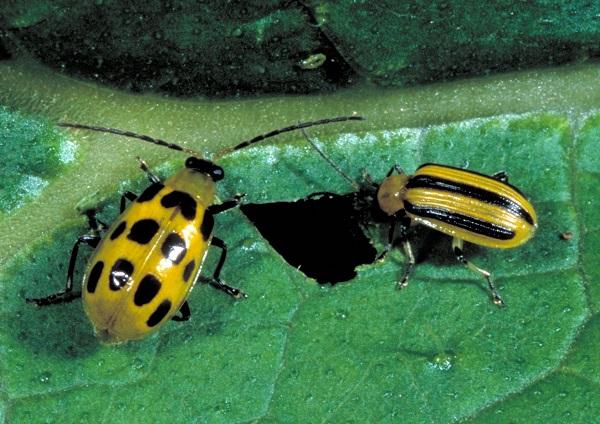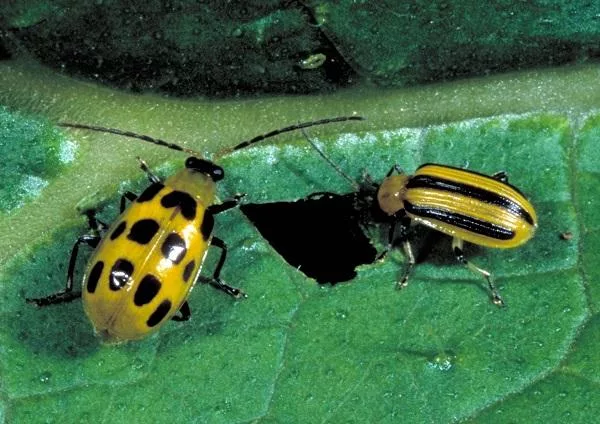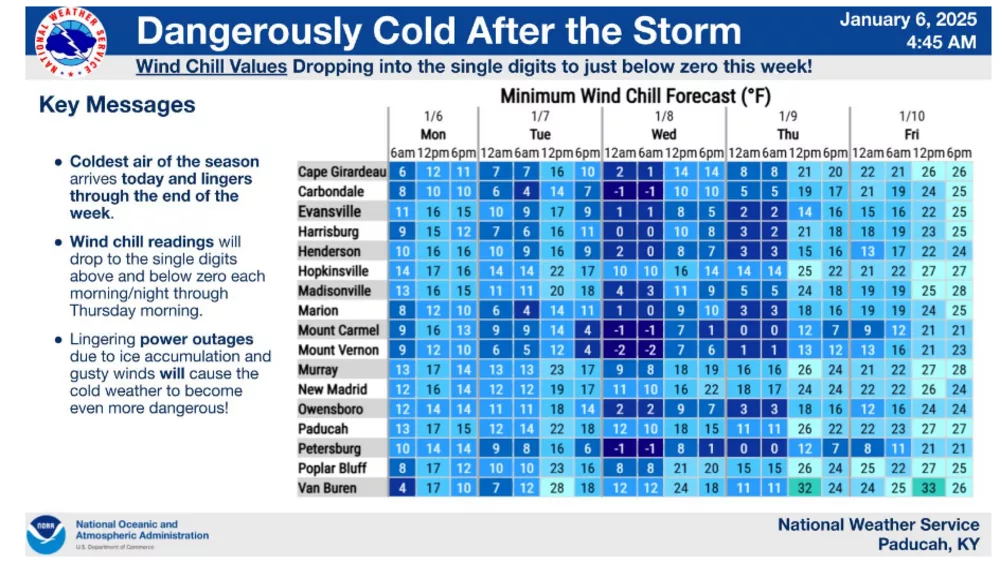Several key pests of vegetables need to be controlled in the late spring, as control during this period will also help with their management later in the summer. It is important to get seedlings and transplants off to a good start. Here are some of the early-season insects that need to be managed to ensure healthy plants.
Cabbage, Broccoli
Striped flea beetles, imported cabbageworm, and diamondback moth larvae are pests that attack these crops. With flea beetles, on seedling plants with less than 4 to 5 true leaves, spraying is needed if there is an average of two beetles per plant. A caterpillar infestation on more than 15 percent of young plants requires treatment. After head-fill or crown formation, plan to treat if more than 5 percent of plants are infested.
Sweet Corn
Corn flea beetles and cutworms are the two primary pests that attack seedling corn. Treat for cutworms if more than 3 percent of seedlings have been cut by active larvae. Flea beetles can transmit the bacterium that causes Stewart’s Wilt. Plant wilt-resistant cultivars in the season following a mild winter. Otherwise, treatment is not required until 50 percent of plants show leaf scars left by corn flea beetles and some of the leaves are turning white.
Tomatoes and Peppers
Tobacco and potato flea beetles will attack both tomato and pepper plants. Usually, plants quickly outgrow moderate damage. Occasionally, serious damage can occur to plants less than six inches tall. When plants are less than 6 inches tall, 4 or more beetles per plant require a treatment. Colorado potato beetle can also do serious damage to tomato plants less than 8 inches tall. Use 10 beetles per 20 plants to determine if you should treat.
Eggplant and Potato
As with tomato, flea beetles and Colorado potato beetle are serious early-season pests of potato and eggplant. Use the same threshold for tomatoes above. Resistance to insecticides continues to be a serious problem when controlling the Colorado potato beetle. Because of this, do not use insecticides with the same mode of action on consecutive treatments of this insect. Look for the new IRAC codes shown on insecticide labels. Select products that list Colorado potato beetle as a controlled pest then compare the IRAC codes. Choose at least two products with different codes and rotate the products when treating to reduce resistance problems with this pest.

Squash, Cucumbers, and Melons
Striped and spotted cucumber beetles can attack cucurbit crops anytime after seeding or transplanting. Cucumber beetles transmit the bacterium that causes bacterial wilt. For this reason, cucurbit crops must be treated for cucumber beetles as soon as they are planted (or begin growth from seed) through the start of flowering. Keep in mind that cucurbits are insect-pollinated, so measures need to be taken to control the beetles and avoid hurting pollinators. Options include spraying in the early evening after pollinators have quit or use a systemic insecticide just after transplanting. The flowers that are open will be closed the next day and new blooms free of insecticide on the inner surface will be open the following day. Squash bugs will begin to arrive around June 1 and like cucumber beetles, also carry a disease (Yellow Vine Decline), so they must be controlled early.
— Kelly Jackson, Christian County Extension Agent





